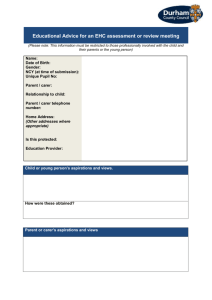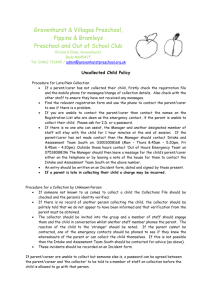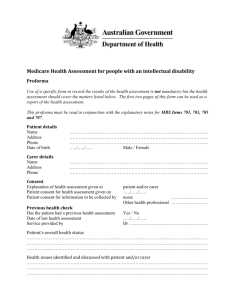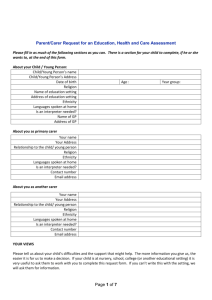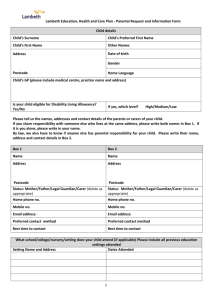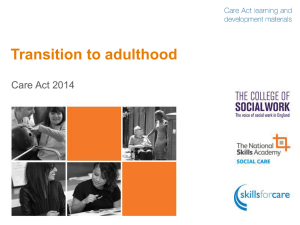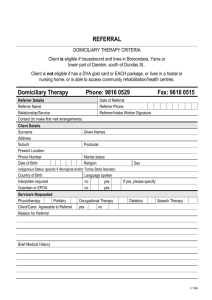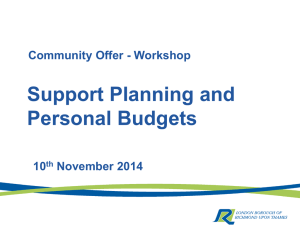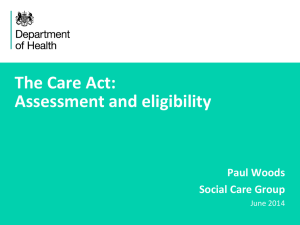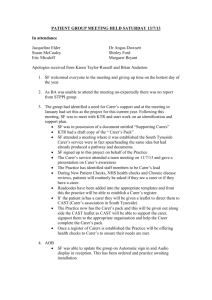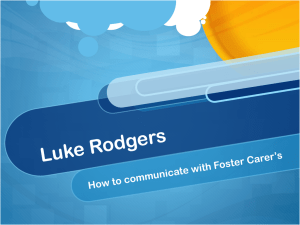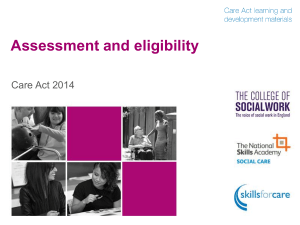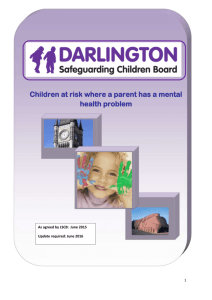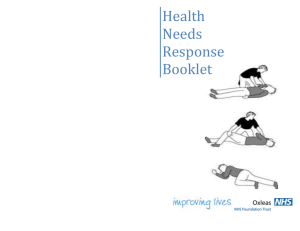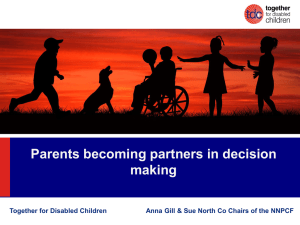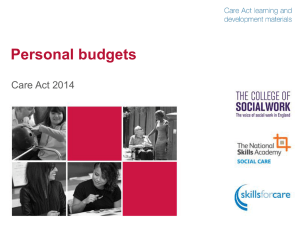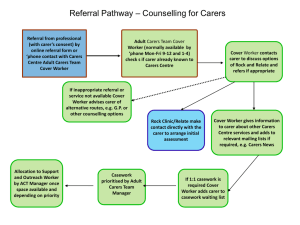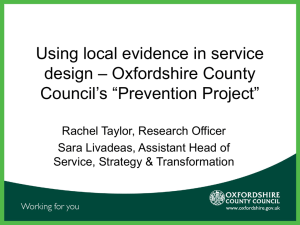Assessment and eligibility overview slide pack
advertisement
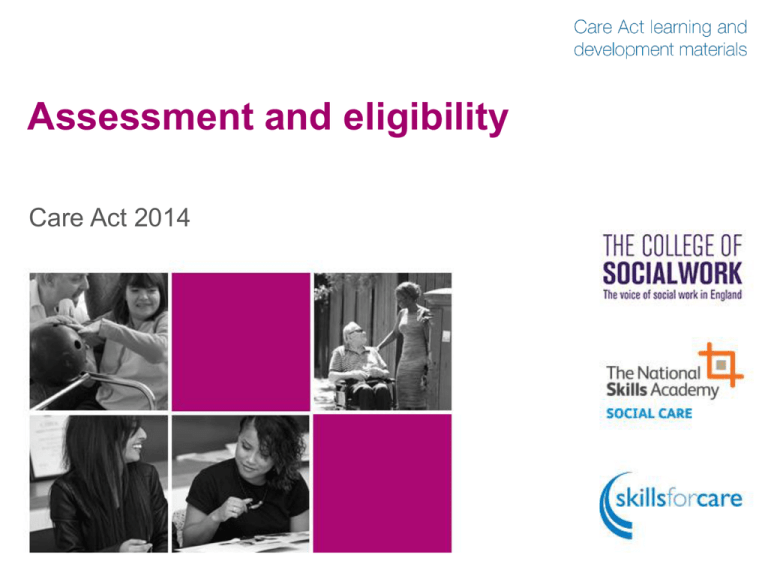
Assessment and eligibility Care Act 2014 Assessment Assessment is both a key process AND a critical intervention An assessment should identify: care and support needs what outcomes the individual is looking to achieve to maintain or improve their wellbeing how care and support might help in achieving those outcomes A carer’s assessment must also explore: the sustainability of the carer’s caring role the impact on the carer’s activities beyond their caring responsibilities 2 Appropriate and proportionate assessment People should receive an assessment that is appropriate and proportionate The process can be flexible and include e.g. telephone, on-line, supported self-assessment and combined assessments To be appropriate assessments should meet the person’s communication needs Appropriate assessments can include a pause to check the value of preventative services or interventions, reablement, or aids and adaptations 3 Building blocks of good assessment Preventing needs Strengthsbased Whole family good assessment practice 4 Eligibility threshold An adult meets the eligibility criteria: Their needs are caused by physical or mental impairment or illness As a result of the adults needs they are unable to achieve two or more specified outcomes As a consequence there is or is likely to be a significant impact on the person’s well-being An adult is to be regarded as being unable to achieve an outcome if the adult: is unable to achieve it without assistance; is able to achieve it without assistance but doing so causes the adult significant pain, distress or anxiety; is able to achieve it without assistance but doing so endangers or is likely to endanger the health or safety of the adult, or of others; or is able to achieve it without assistance but takes significantly longer than would normally be expected. The specified outcomes are: Managing and maintaining nutrition Maintaining personal hygiene Managing toilet needs Being appropriately clothed Being able to make use of the home safely Maintaining a habitable home environment Developing and maintaining family or other personal relationships Accessing and engaging in work, training, education or volunteering Making use of necessary facilities or services in the local community including public transport and recreational facilities or services Carrying out any caring responsibilities the adult has for a child 5 Carers’ eligibility threshold A carer meets the eligibility criteria if: Their needs are caused by providing necessary care for an adult. As a result: their health is at risk or they are unable to achieve specified outcomes As a consequence there is or is likely to be a significant impact on the carer’s well-being A carer is to be regarded as being unable to achieve an outcome if the carer: is unable to achieve it without assistance; is able to achieve it without assistance but doing so causes significant pain, distress or anxiety, or is likely to endanger health or safety The specified outcomes are: Carrying out any caring responsibilities the carer has for a child Providing care to other persons for whom the carer provides care Maintaining a habitable home environment Managing and maintaining nutrition Developing and maintaining family or other personal relationships Engaging in work, training, education or volunteering Making use of necessary facilities or services in the local community including recreational facilities or services Engaging in recreational activities 6 Next steps Assessment • What are the needs and outcomes the person wants to achieve? Eligibility determination • Are the person’s needs eligible? Met needs Unmet needs • What needs can be/are being met through nonservice provision? • Are included in the personal budget 7
